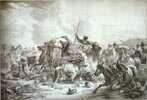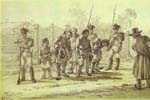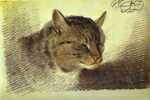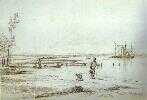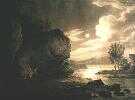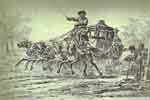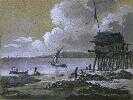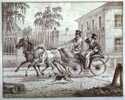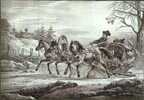
- store
-- search for products associated with Aleksander Orlowski
- vote for Aleksander Orlowski
-- favourite artist
-- favourite epoque
artist: 27550 votes
epoque: 906026 votes
-- viewed 190671 times
pl: Aleksander Orłowski |
He was born as a son of a inn holder, who came from a poor noble family. According to the eighteen century salon legend he was discovered by the Czartoryski family during their stay in his father's inn near Siedlce. Never mind the details, he was given under the care of Jean Pierre Norblin de la Gourdaine polonised French court painter of Czartoryskis prince family. It seems that Norblin had deciding influence on Orlowski's artwork. Orlowski fought as a volunteer in Kosciuszko's Insurrection and was hurt during one of the battles, after Kosciuszko's lost he found a protector in the person of prince Jozef Poniatowski, kings Stanislaus Augustus nephew, future marshal of Napoleon's army. In Poniatowski's palace in Warsaw he used to entertain prince's guests by paining their quick portraits or by drawing sketch illustrations to the topics of their chats. This not really artistically improving role seemed to not satisfy Orlowski. But the main goal of living in Warsaw was the opportunity of having contacts king's Stanislaus Augustus Poniatowski court painters. Orlowski probably took lessons of painting in workshop of Marcello Bacciarelli. In early nineties of 18th century Orlowski was eyewitness of the drafting the Constitution of May 3rd , first democratic constitution in Europe, then his native country's fall and at least the abdication of the king Stanislaus. Those events were memorized in his sketches. In 1802 he was engaged in Petersburg as a court artist to the Grand Duke Constantin Pavlovich. But even on service of Russia's tsar's brother he didn't forsaken his Polish roots and being Polish noble. He became popular among city's high society, he was a friend with Ivan Krylov, Alexander Pushkin, Petr Vyasemsky, Denis Davydov, and others, even appeared a a character in one of Pushkin 's poems. His works were mostly drawings, aquarelles and lithographies, used mainly as a notes of the events and everyday life. Often given as a present straight to his models. Also Orlowski's oil paintings were priced, to mention only portraits, like those of the grand duke Constantin Pavlovich and Pushkin, and pictures presenting scenes from the history of Russia, for example "Peter I on the Battlefield". On the other hand he painted scenes from his native country's history, especially portraits of prince Poniatowski and Kosciuszko whom he considered as his personal idols. Orlowski is claimed to be the pioneer of pastels and lithography in Russia, he also started genre scenes painting and marine thematic in Russian art. He is considered as the godfather of Polish school of horse scenes. Till the death of his employer he was wealthy, collected art, old military equipment (his collection of weapons was bought by the Tsar to the Petersburg's Hermitage Museum). He worked for Topographic Department of the Russian Army Headquarters. In 1819 he became member of the Science Association in Cracow. After grand duke's death his position was destabilized, Nicolas I, the new tsar, didn't wanted Orlowski on his court. Possibly it was caused by the fact that after the November Rebel in Kingdom of Poland, against tsar's government, people who used to accent their Polish roots, as Orlowski did, weren't welcome. He died in Petersburg in age of 55. Thanks to the artist's great creativity and the pioneer position as a lithographer, number of his works seems to be uncountable. They were very appreciated in Europe and had many buyers in various countries. Great amount of his works was sold in England. After artist's death the artwork of Orlowski was forgotten in west Europe. Orlowski's works can be seen in many museums and private collections of USA, Germany and in greatest amounts in the museums of Russia, England and Poland. |
other URLs: Polish Art.pl ¤ Polish-Art.pl ¤ tworcy.com ¤ rzezbiarze.com ¤ rytownicy.com ¤ Daniel Chodowiecki
¤ TeWa ubezpieczenia Kraków ¤ Daniel Schultz ¤ Marian Ruzamski ¤ Tomasz Wiktor painting
